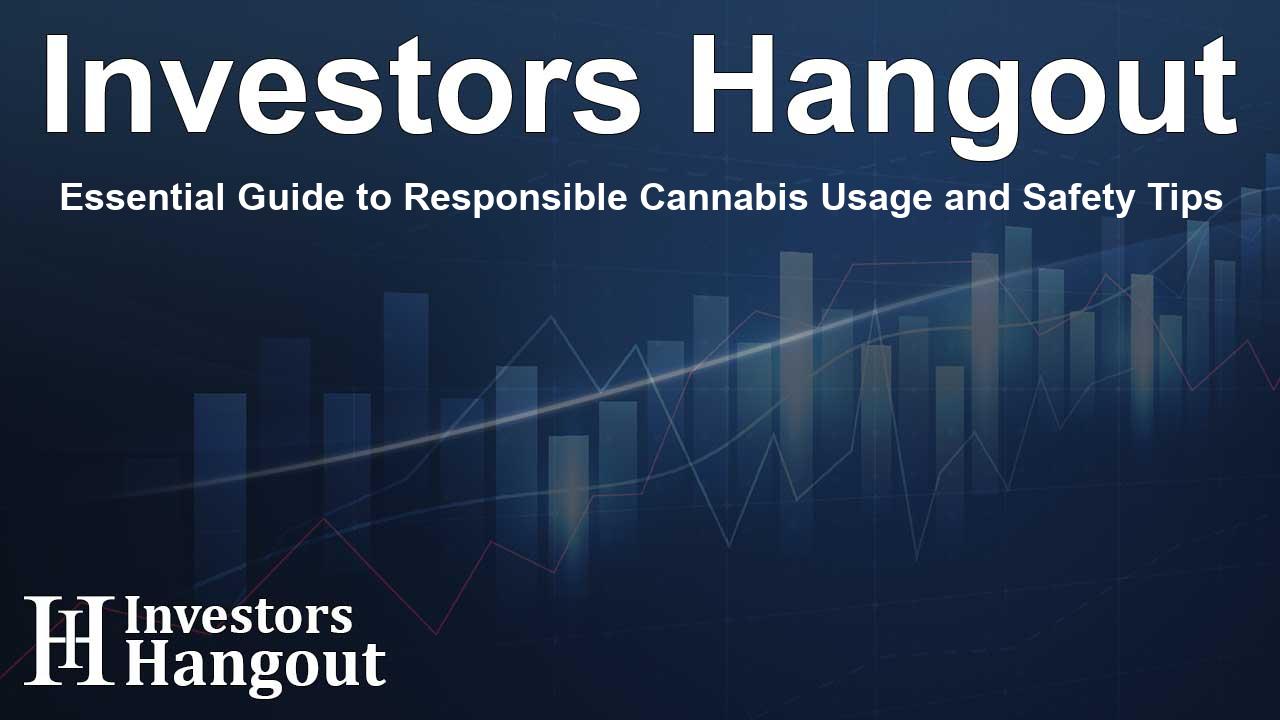Essential Guide to Responsible Cannabis Usage and Safety Tips

Understanding Harm Reduction in Cannabis Use
Harm reduction is a thoughtful approach designed to minimize health, social, and legal repercussions tied to drug use and prohibitionary practices. It acknowledges that some individuals will continue using substances and aims instead to lessen the risks while enhancing overall quality of life.
With cannabis being one of the most widely used substances globally, implementing harm reduction strategies can vastly improve user safety and well-being. The following tips are derived from reputable organizations invested in health and safety regarding drug use.
10 Tips for Safer Cannabis Use
Here are ten crucial recommendations to reduce risks associated with cannabis consumption:
1. Choose Safer Methods of Consumption
While smoking cannabis is popular, it brings harmful toxins into the lungs. Consider alternatives such as vaping or using water pipes, which minimize toxins without sacrificing enjoyment. Vaping heats cannabis rather than burning it, decreasing tar and carcinogen intake. Health organizations affirm that avoiding combustion and utilizing safe, clean materials for pipes and devices is essential for user safety.
2. Start Low, Go Slow
Cannabis potency can significantly vary based on the strain and format, particularly with edibles. When sampling new strains, particularly edibles, begin with small amounts, allowing time to gauge effects. This conservative approach helps prevent overdosing and the accompanying uncomfortable effects.
3. Be Cautious with Edibles
Although edibles eliminate the harms of smoking, they can pose their own challenges. Their effects can take up to two hours to manifest, leading to potential overconsumption if users are impatient. Starting with a low dose and allowing ample time before considering additional doses is advisable.
4. Understand THC and CBD Ratios
The balance of THC (tetrahydrocannabinol) and CBD (cannabidiol) can markedly shape the effects of cannabis. High THC strains may bring about adverse psychological reactions. Therefore, selecting strains with higher CBD content can provide a more balanced and pleasant experience, reducing risks like anxiety and paranoia.
5. Avoid Mixing Cannabis with Other Substances
Combining cannabis with tobacco or other drugs can elevate health risks and unpredictably alter the effects. It's best to use cannabis by itself or with safer methods such as vaporizers to lower potential damage. Staying away from alcohol or other intoxicants is also advised for maintaining control over your experience.
6. Use Quality Cannabis Products
Prioritize high-quality cannabis flowers instead of lower-grade products that may carry impurities. Well-grown flowers devoid of stems, seeds, and leaves (unless leaves are intended) can significantly enhance the overall experience and minimize harmful intake.
7. Be Mindful of Legal Implications
Laws regarding cannabis vary significantly from one region to another, and possession can result in legal consequences. Stay updated on local laws and regulations, and consider registering for official medical programs where available to obtain quality products legally.
8. Consider Mental Health Factors
Cannabis consumption could exacerbate mental health problems, especially in those with preexisting conditions like psychosis. While a majority of users may not face health issues, those vulnerable to such challenges should approach cannabis use with caution, ideally seeking professional guidance.
9. Create a Safe Consumption Environment
The environment where cannabis is consumed can dramatically affect the experience. Choose a comfortable and secure setting to help reduce any feelings of anxiety or paranoia.
10. Stay Hydrated and Listen to Your Body
Cannabis may lead to dryness and dehydration, so drinking plenty of water is essential. If feeling unwell, such as experiencing dizziness or nausea, take a moment to relax, practice deep breathing, and wait before consuming more cannabis.
By considering these harm reduction recommendations, cannabis users can make educated choices that safeguard their health and well-being. While cannabis holds therapeutic and recreational potential for many, being informed is critical in minimizing associated risks.
Frequently Asked Questions
What is harm reduction?
Harm reduction refers to strategies aimed at minimizing the negative effects of drug use for individuals who choose to partake.
How can I consume cannabis safely?
To consume cannabis safely, opt for safer methods, start with low doses, and ensure you're in a comfortable environment.
Why is understanding THC and CBD ratios important?
The THC to CBD ratio can influence psychoactive effects and may alter the user's experience significantly.
Are there risks to combining cannabis with tobacco?
Yes, combining cannabis with tobacco increases health risks and can lead to respiratory issues and dependency.
How can I stay informed about cannabis laws in my area?
Regularly check local regulations and updates regarding cannabis legalization and usage in your region.
About The Author
Contact Logan Wright privately here. Or send an email with ATTN: Logan Wright as the subject to contact@investorshangout.com.
About Investors Hangout
Investors Hangout is a leading online stock forum for financial discussion and learning, offering a wide range of free tools and resources. It draws in traders of all levels, who exchange market knowledge, investigate trading tactics, and keep an eye on industry developments in real time. Featuring financial articles, stock message boards, quotes, charts, company profiles, and live news updates. Through cooperative learning and a wealth of informational resources, it helps users from novices creating their first portfolios to experts honing their techniques. Join Investors Hangout today: https://investorshangout.com/
The content of this article is based on factual, publicly available information and does not represent legal, financial, or investment advice. Investors Hangout does not offer financial advice, and the author is not a licensed financial advisor. Consult a qualified advisor before making any financial or investment decisions based on this article. This article should not be considered advice to purchase, sell, or hold any securities or other investments. If any of the material provided here is inaccurate, please contact us for corrections.
